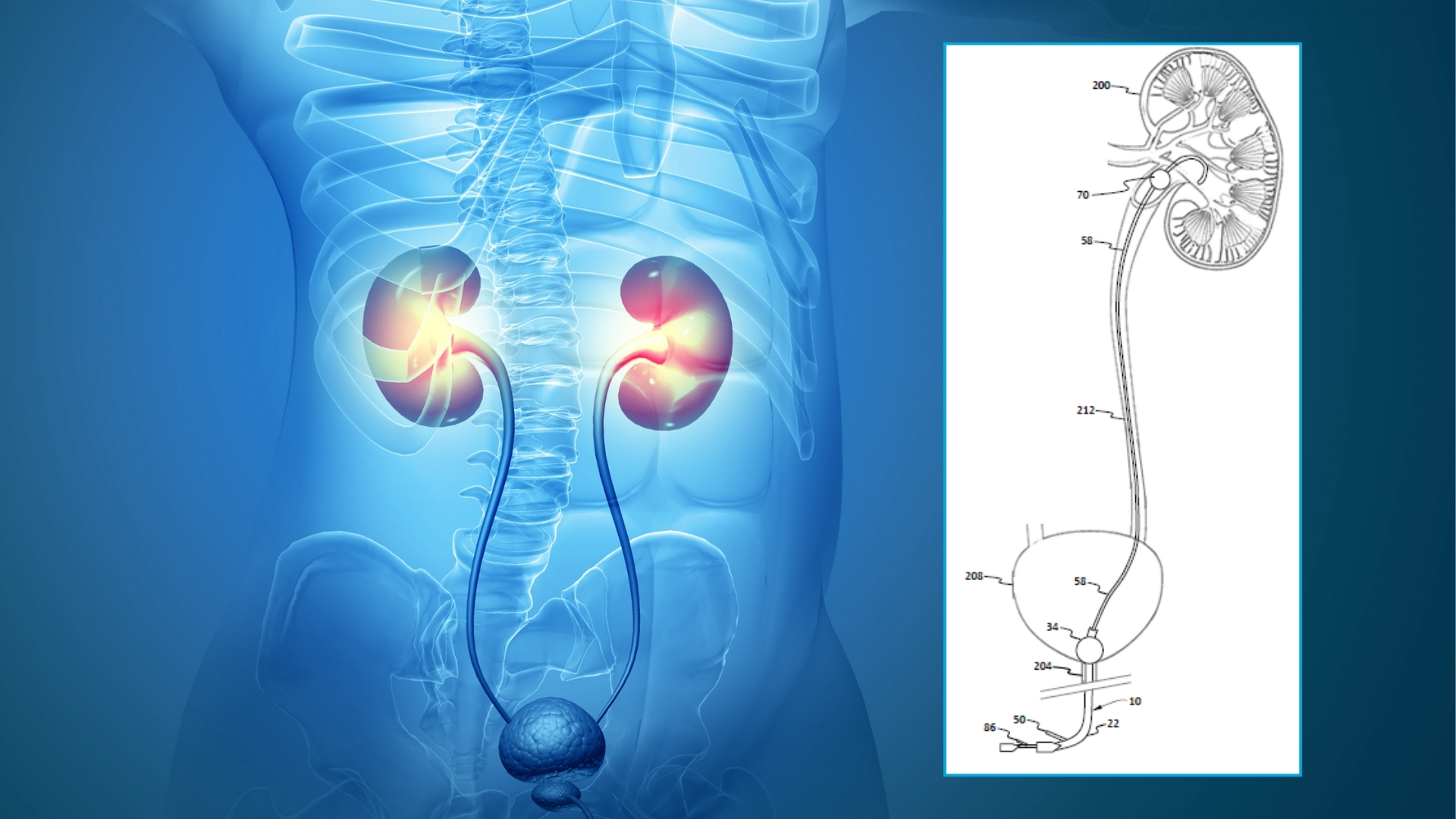SUMMARY
This device provides minimally invasive drug delivery and retention to the inside of the kidney
The Unmet Need: This device provides minimally invasive drug delivery and retention to the inside of the kidney
Administering and retaining drugs to the inside of the kidney is challenging for a few reasons:
-
Access: normal human kidneys are situated high in the abdomen, making administering drug from the natural urine exit orifice, the urethra challenging
-
Short transit time of urine in the kidney prevents adequate contact time between drugs and the inner lining of the kidney collecting system for these drugs to exert their therapeutic effects
-
The anatomy of the kidney is divided into compartments so while the drug can encounter one compartment it may not get in contact with the rest, increasing the risk other parts of the inside of the kidney are not treated
Current methods for drug delivery to the kidney include the percutaneous/antegrade route and the transurethral/retrograde route. While the percutaneous route allows multiple drug administrations to the kidney under sedation for an extended period of time, it does not solve the problem of short drug transit time and uneven distribution of the drug inside the kidney. The transurethral route accesses the kidney by catheter through the urethra providing homogeneous distribution of the drug to the inside of the kidney yet it requires general anesthetic, has no mechanism to stay in place so only allows one-time administration, and does not solve the problem of short transit time.
Proposed solution: The inventors have developed a transurethral retrograde system that allows for repeated delivery and retention of drugs into the kidney. The device is based on a catheter system consisting of a commonly used guidewire, a commonly used council tip urethral catheter, and a newly designed single J-ureteral access catheter.
FIGURE

The above diagram shows how the catheter system would interact with the kidney. Balloons allow the catheter to stay in place while treatment is being delivered and the drug elution ports at the tip of the device allow for liquid drug to be delivered directly into the kidney. For patients who are likely to need further treatments, the systems can remain in the patient for days, weeks, or more.
ADVANTAGES
ADVANTAGES
- Simple, inexpensive production
- Homogenous distribution of the drug inside the kidney with adequate contact time between the drug and kidney lining to exert therapeutic effects
- Easy repeated access to the kidney without general anesthetic
- Familiar route/procedure to the Urologist/Interventional Radiologist
APPLICATIONS
- Drug delivery to the kidney
February 27, 2024
Proof of concept
Patent Pending
Licensing,Co-development
Omer Raheem